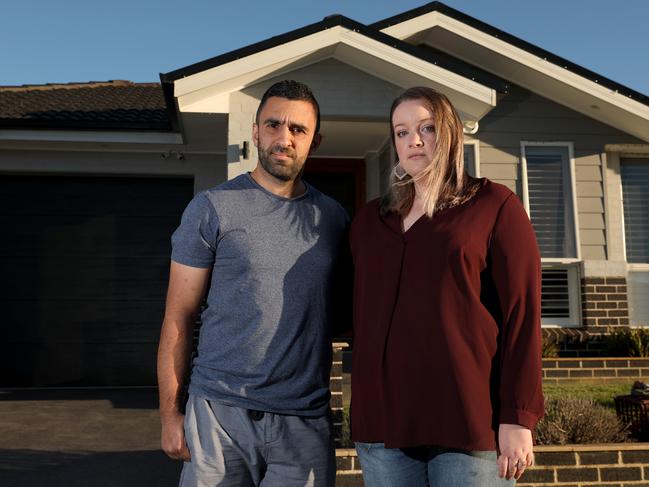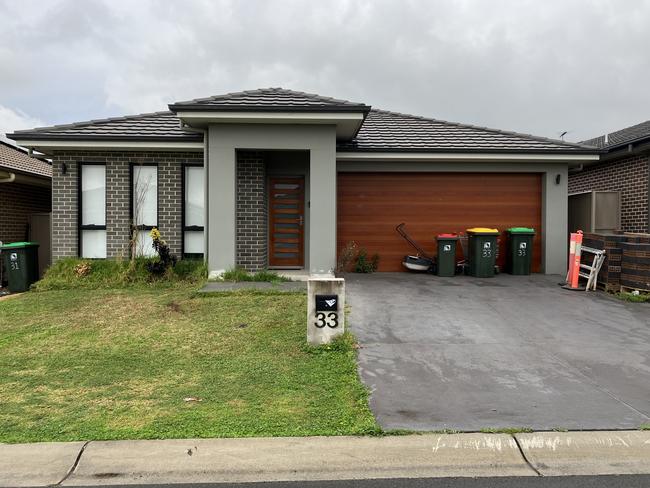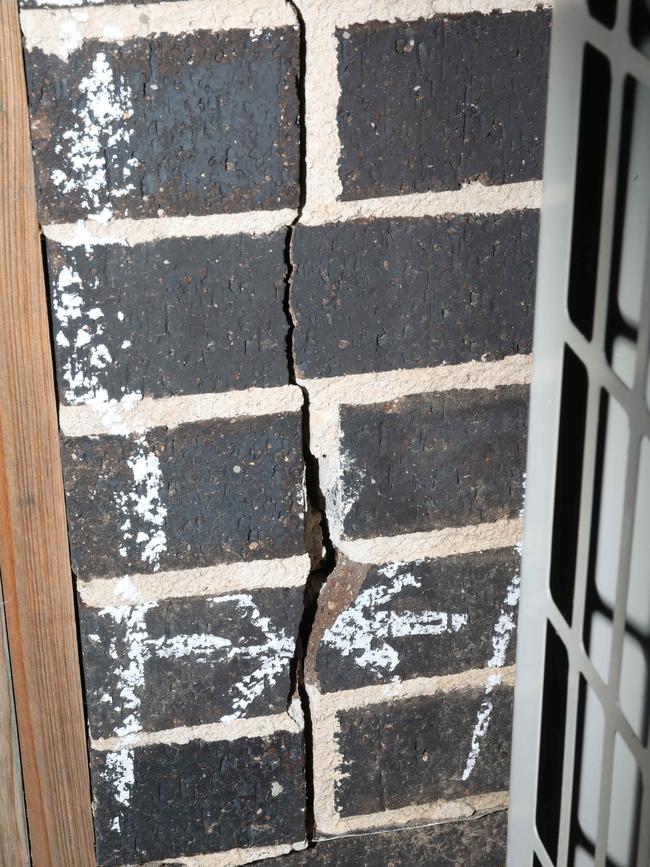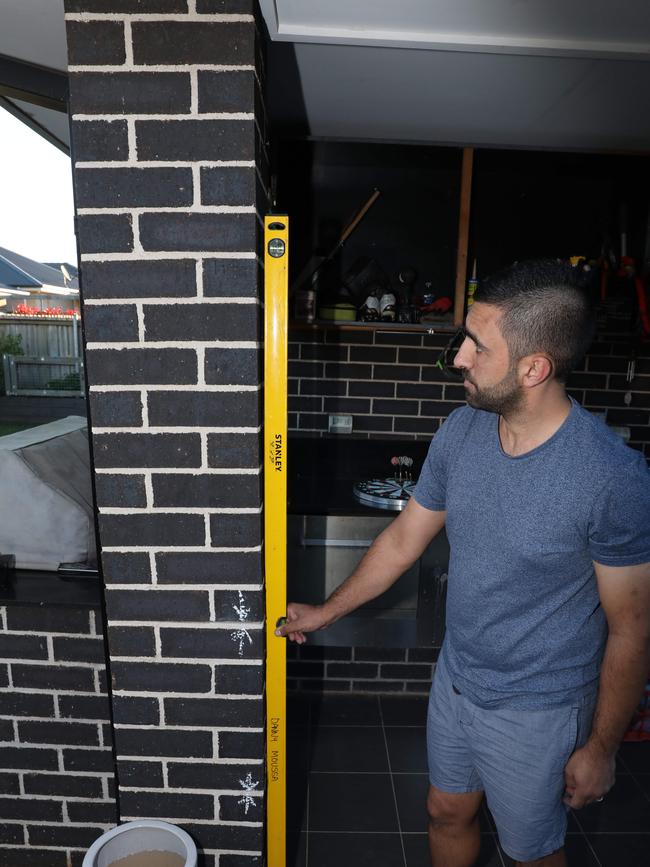Spring Farm sinking suburb: Class action defence blames residents for non-existent mine subsidence
A fresh twist in the Sydney sinking suburb class action has seen victims whose houses are falling apart wrongly accused of ignoring claims the area used to be a mine site. Because it wasn’t.
NSW
Don't miss out on the headlines from NSW. Followed categories will be added to My News.
The homeowner leading a class action over a sinking Sydney suburb has been accused of ignoring claims in the contract for sale that the area used to be a mine site.
However, the assertion that the subdivision was once a mine – made in an official defence to the class action – appears to be incorrect.
The NSW Supreme Court suit seeks tens of millions of dollars in compensation for more than 3500 homeowners at Spring Farm near Camden who purchased lots from late 2014 onwards.
The lead plaintiff is resident Danny Moussa, whose house is cracking up as it slowly drops into the ground.
The respondents to the action are the area’s developer, Cornish Group, along with Camden Council and geotechnical engineering firm SMEC Testing Services.

A document filed with the court on behalf of Mr Moussa and other Spring Farm owners said they had “no practicable ability to prevent, avoid or minimise suffering damage to property or pure economic loss as a result of undue settlement of the council land, or the undue settlement of land located in other parts of the Cornish masterplan area, or consequent stigmatisation of land in the Spring Farm area.
According to the document, the owners were “particularly vulnerable to any undue settlement of the council land, or the undue settlement of land located in other parts of the Cornish masterplan area, and consequent stigmatisation of land in the Spring Farm Area, and consequently … were dependent for the protection of their property and economic interests upon SMEC” Testing Services.

SMEC is in liquidation, but a defence filed for it argues Mr Moussa and other owners supporting the class action should have done more due diligence prior to purchasing.
“The plaintiff and the (class action) group members had the capacity to protect themselves from the risk of loss of the kind pleaded” in the amended statement of claim, the defence said. “Any loss or damage suffered … was caused by the failure … to protect their own interests.”


A reasonable person would have hired a “qualified engineer to conduct his or her own assessment of the structural adequacy (or otherwise) of the property and its foundations,” the defence document continues.
“Prior to purchasing the property”, a reasonable person would have reviewed “the information under the heading ‘Mine Subsidence” in the (section) 149 certificate that was attached to the contract for the sale of land and (consulted) the Mine Subsidence Board regarding mine
subsidence and any surface development guidelines, including by calling the telephone number identified in the s 149 certificate.


However, The Daily Telegraph checked Mr Moussa’s address with the subsidence agency, which said it wasn’t affected. The nearest mine subsidence area was about one kilometre south.
When this was put to SMEC’s lawyer on Thursday, he said he couldn’t comment because the matter was still being litigated and he didn’t have instructions from his client.
The SMEC defence also said Mr Moussa and other owners could have made a claim against their builder for breach of warranty.
“Further or alternatively, if property values in the Spring Farm Area have been diminished by some perception of stigma, such perception is as a result of the plaintiff or his litigation funder (or both), bringing these proceedings, publicising these proceedings, or both,” the defence said.
The case continues.





